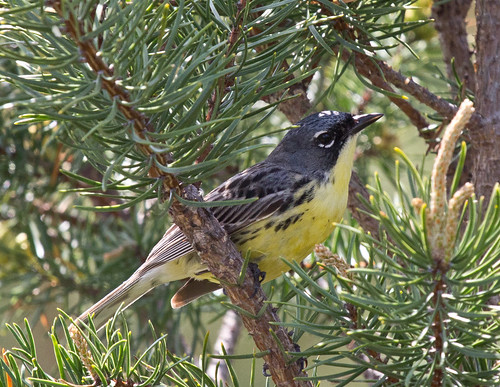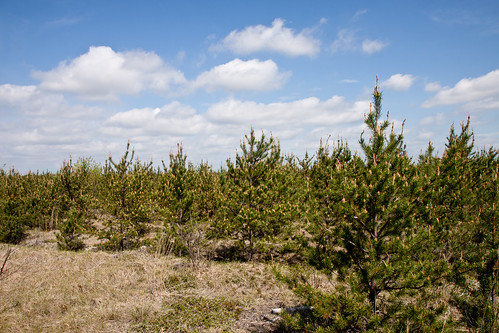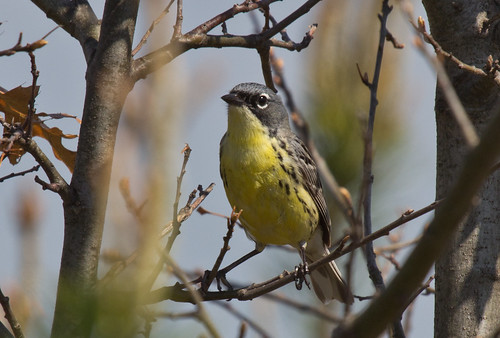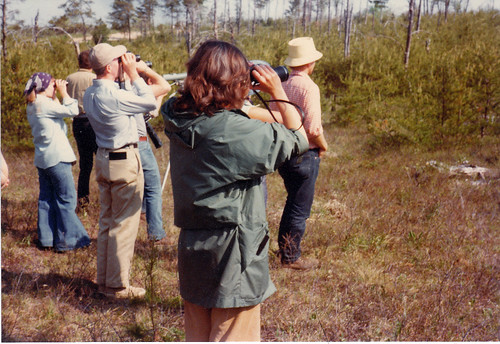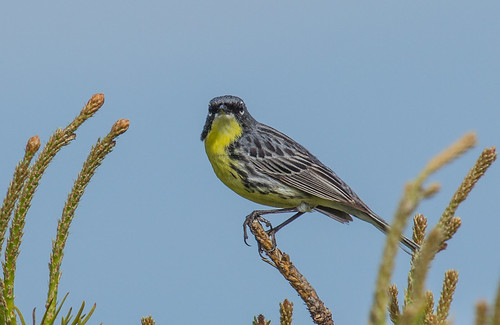In the movie When
Harry Met Sally, Sally Albright orders a piece of pie in a restaurant
saying, “I'd like the pie heated and I don't want the ice cream on top, I want
it on the side, and I'd like strawberry instead of vanilla if you have it, if
not then no ice cream just whipped cream but only if it's real; if it's out of
the can then nothing.” The waitress asks, “Not even the pie?” and Sally
responds, “No, I want the pie, but then not heated.”
In the movie, that particular brand of fussiness is part of
what endears Sally to us. We humans are a varied lot, from people who just grab a
chunk of pie into their hand and gobble it down to people who are very
particular about every little element of their food.
Kirtland’s Warbler is rather the Sally Albright of the
bird world. It nests in areas of pine, but not just any pine—Kirtland’s Warbler
must have jack pines, and want them in stands over 80 acres in size. The jack
pines must be growing on well-drained soil, and not just any well-drained
soil—the birds want what’s called Grayling sand, which has very low humus
content so water percolates right through and the nests don’t get flooded. And Kirtland’s
Warblers won’t accept just any old jack pines—the trees must be no younger than
about 5 years old, and no older than about 20 years old. The warblers nest on
the ground beneath the pines, and need for the trees to be large enough for
their bottom branches to provide protection, and stop using the trees altogether
when they’ve lost their lower branches. Ideal habitat for them was historically
found within a large swath of the northern part of Michigan’s Lower Peninsula.
Kirtland’s Warbler was first described for ornithology in
1851, when a migrant was collected outside Cleveland, Ohio. One wintering in
the Bahamas was shot in 1879. But ornithologists didn’t discover the actual
breeding grounds in Michigan until 1903, in Osceola County. The big, beautiful
warbler with the loud voice attracted a lot of research, but not a single nest
was found farther than 60 miles from that first nest until 1996.
That precise habitat is rather forbidding for us humans—the
low nutrient content of Grayling sand makes it inappropriate for agriculture
and for manicured lawns both. There had always been plenty of jack pines the
right age in that area of Michigan, where forest fires occurred rather
frequently due to the dry conditions. Jack pine cones don’t open to release
their seeds until they’re exposed to the extreme heat of fires, so they’re
among the very first plants to pop up after a forest fire. Unfortunately,
decades of forest management that included fire suppression severely limited
new growth of jack pines, and by 1975, there were slightly fewer than 200
singing males. Michigan designated the Kirtland’s Warbler the “Bicentennial
Bird.” Researchers covering the species entire range managed to find just about
exactly 200 singing males that year. Only 167 singing males were found in the
census at the low point in 1987. Kirtland’s Warbler was our rarest endangered
songbird except for Bachman’s Warbler, which is now extinct.
Thanks to the Endangered Species Act, foresters started
managing Michigan’s jack pine forests for Kirtland’s Warblers, using fire as
the primary tool to ensure that there were plenty of jack pines the right age.
Unfortunately and tragically, a fire in 1980 went out of control, destroying 40
homes and killing a young Forest Service worker. The burn obviously had to
change some of our approaches to management in the area, but by the late 80s,
that burned over area provided so much appropriate habitat that, combined with
Brown-headed Cowbird removal, the Kirtland’s Warbler population started
growing. In 1993, the census found 485 birds, more than double the low of six
years earlier, and now the population includes over 2,000 pairs—so many that some
had to spill out beyond the species’ original narrow range to claim any
territory at all. Now we have a few nesting pairs in the Upper Peninsula of
Michigan, Ontario, and Wisconsin.
Kirtland’s Warbler was doing just fine despite its fussy
ways until we humans started suppressing fires and destroyed the tight
relationship between Brown-headed Cowbirds and bison. Fortunately, this lovely
bird with its cheerful song is as endearing as Meg Ryan’s Sally, giving us
humans plenty of incentive to act as the species’ own Harry. As long as we can
ensure the continuation of appropriate habitat for Kirtland’s Warblers and make
sure cowbirds don’t wipe out their reproduction, the Sally Albright of the bird
world should continue to thrive, thanks to the Endangered Species Act.
